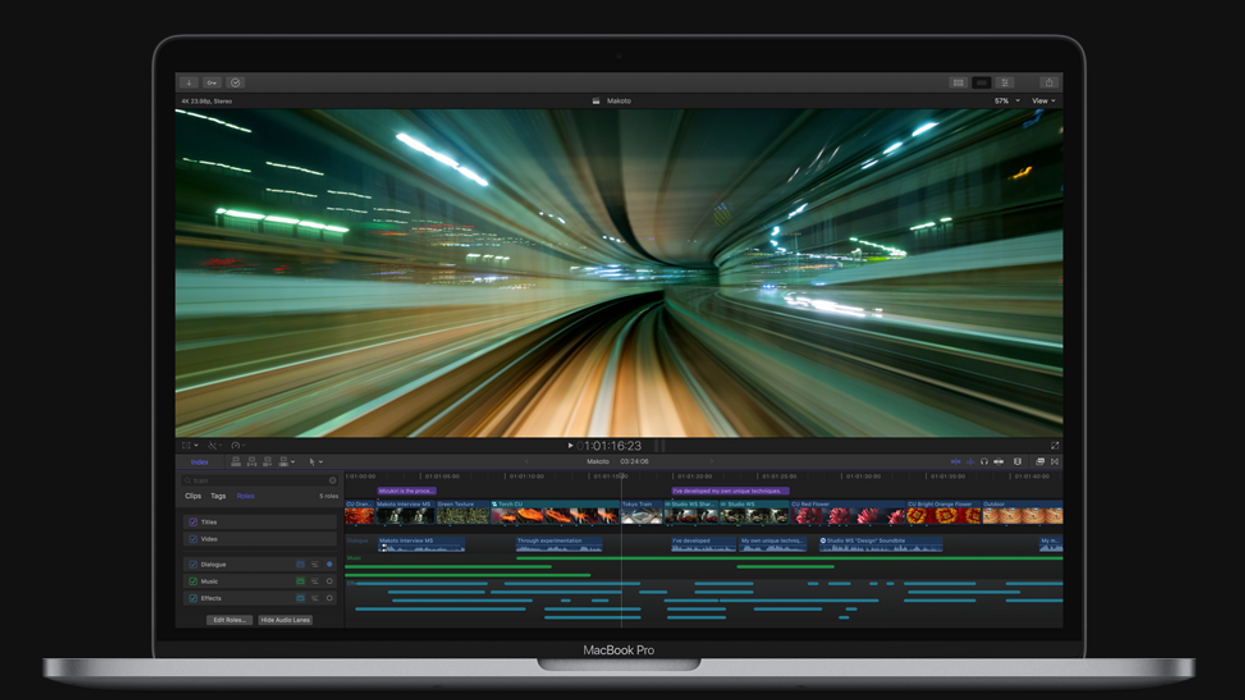Final Cut Pro X Gets Full Redesign for 10.3
While many users have moved over to Avid and Premiere, Final Cut keeps on developing.

Alongside the release of the new MacBook Pro last week, Apple also unveiled Final Cut Pro 10.3. While there are a few key software details that are clearly intended to work seamlessly with new features on the MBP, this release is much more than that. It offers a complete redesign of the user interface, powerful new audio organization tools, the integration of wide gamut workflows, and many more features that will likely make some filmmakers reconsider an app many left behind.

Of course, the feature demonstrated on stage last week is the first many noticed, with strong integration between the touch bar and the newest version of Final Cut being one of the ways Apple promoted the new keyboard interface screen. With the ability to zoom and navigate your timeline, dynamically change your palettes, and otherwise interact more closely with your footage, Apple is clearly hoping you'll consider giving FCP X a shot with the purchase of your MBP. However, Adobe was also on stage, previewing new features for Photoshop, so we can assume Premiere will have smart integration, and Resolve is apparently already working on putting the Touchbar to good use, as well. Therefore, while the touchscreen integration is exciting, it alone isn't necessarily enough to get users who walked away from Final Cut after 7 to consider coming back.


One interesting set of upgrades is an increased variety of options for second screen workflows. Considering the focus of Apple on single screen interfaces (to better facilitate iMac and Macbook Pro work), FCP X has often felt frustrating for multi-screen editors in a way that Premiere and Avid haven't. Even Resolve hasn't always used the extra screen real estate well and can seem like it was really meant to be a single screen application. However, this revision allows for full screen timeline and browser modes when working dual screen, which, in combination with the customizeable palettes, should make for better use of large screen real estate.

An interesting area of improvement is the new "magnetic timeline 2," with improved "role" functionality for audio clips. FCP X was built from the ground up around a dynamic, magnetic timeline that changes depending on how it's being used. This is a paradigm shift for many editors and has slowed many people from adopting, or even trying, the software. With 10.3, the magnetic timeline has been improved and might be more familiar to traditional editors, and you'll also get the added ability to group your audio into "lanes," which will allow you to have some of the benefits of tracks while still offering the dynamic responsiveness that FCP X is designed for. By assigning audio a role, either on import or even before ingest through iXML, the audio clip will know whether it's an effect, dialogue, music, etc. When doing pre-mixes or exporting stems, it'll be easier to group the audio together by selecting only elements that follow a specific role, instead of having to double check your entire timeline to make sure you arranged the audio properly and no clips are in the wrong track.

This seems like a lot of improvements for a release that doesn't change a full revision number, but there is a major perk to this being a 10.3 as opposed to Version 11. This is a free upgrade for all existing users of FCP X, going way back to its release in 2011. Releasing an upgrade this thorough five years after purchase is a great way to support the filmmakers that have dived in to FCP X.
But the question remains: is this enough for you to feel like Apple still cares about filmmakers?
Available now at Apple.com for $299, with a free 30-day trial available.
Tech Specs:
- New UI
- Customizable workspaces with memory
- Rec. 2020 workflow option, with out of gamut range check
- Color code and batch assign roles
- Full screen timeline and browser options on 2nd monitor
- 64-bit architecture uses beyond 4GB of RAM
- Automatic Touchbar integration
- LUTs automatically applied to footage, including Log
- PCIe and Thunderbolt devices for external video monitoring











